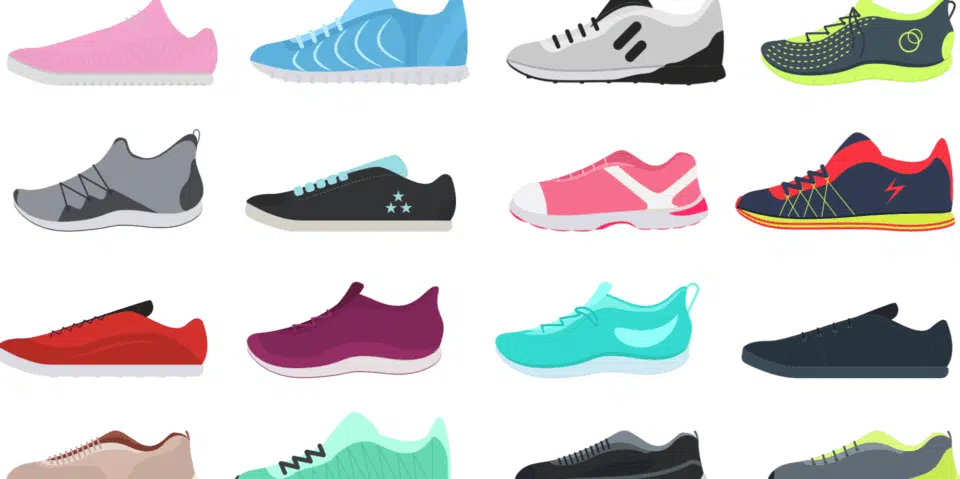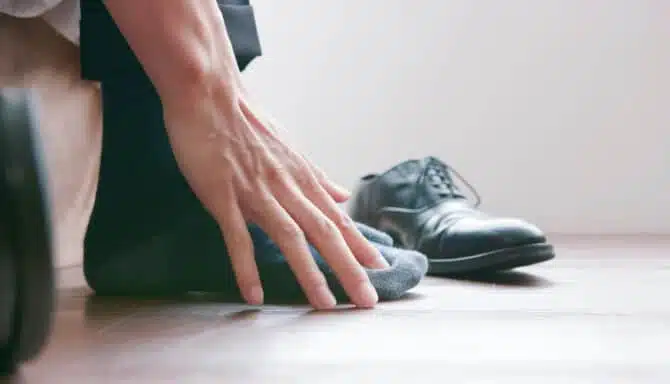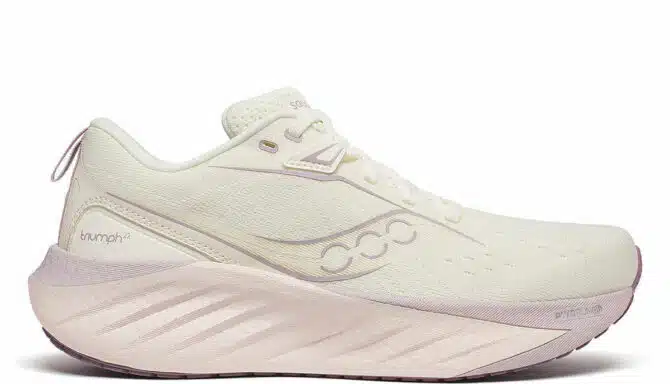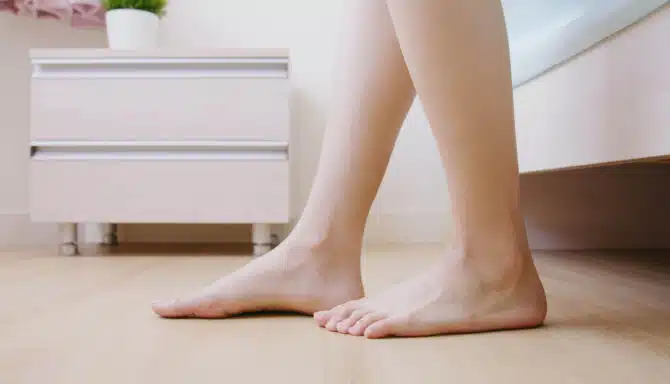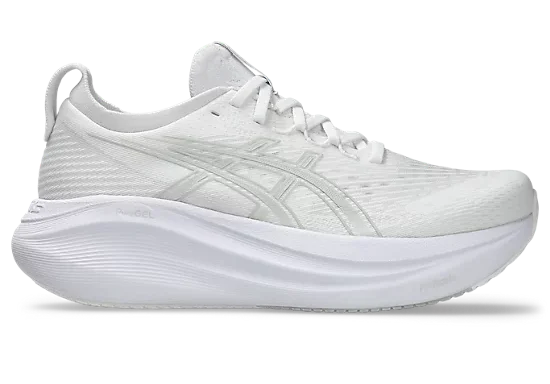As an avid runner and a writer who focuses on gear reviews, I’ve tested just about every type of running shoe on the market.
Since 2015, I’ve worn and tested more than 60 pairs of running shoes from all of the major brands. Overall, I’ve run in more than 150 different pairs of shoes in my lifetime. Two brands that consistently stand out for their value and quality are Saucony and Asics, both of which Feet First Clinic carry in-store.
While you’re here in person, ask us about great orthopedic shoes available to help combat foot problems.
Finding the right shoe is so essential, both for exercise and for your everyday life. Having a quality pair of running shoes can help prevent injury, and can reduce the strain you put on your legs.
With so many brands and various products offered by each, there is an overwhelming number of options. With so many to choose from, it’s easy to have decision anxiety. Not knowing where to start can be a significant hurdle when deciding what pair of shoes you should buy.
Fortunately, there are easy methods to find the right shoe.
In the clinic, for one, we employ 3D video in order to further analyze gait. Video gait analysis involves being recorded while walking on a treadmill. The video software allows us to slow and stop and zoom in on specific areas during your gait. This is done in order to educate you about your foot type and gait pattern. Following the biomechanical assessment and gait analysis, we may recommend certain devices, shoes and/or exercises to assist with obtaining your optimal biomechanics.
Beyond gait analysis, we can help you choose the right pair of shoes based on your desired outcomes.
We offer every customer a comprehensive footwear assessment free of charge to ensure that you invest in the healthiest footwear for your unique feet. Our footwear specialists and chiropodists will help match your foot shape, structure, and alignment to specific shoes and footwear features that answer to your corrective, supportive, or accommodative needs.
To offer a glimpse into two of the top running shoe brands we carry in-store, these are some of our favourite Saucony and Asics shoes on the market right now.
Top running shoes from Saucony and Asics
Saucony Kinvara 14 (men’s / women’s)
https://www.instagram.com/p/B1Wfc8aH-t2/
I’ve written extensively about the Kinvara including the Saucony Kinvara 8 and Saucony Kinvara 9. In my opinion, the Saucony Kinvara 14 is the best all-around shoe on the market. It’s neutral-cushioned, meaning it’s great for people who don’t overpronate or supinate. The Kinvara 14 is also light, and offers enough cushioning to help ward off many common foot injuries.
Because of the structure of the shoe, the Kinvara 14 feels more natural than most leading competitors. This is mostly due to the shoe’s drop at just 4 mm, which means the heel is 4 mm higher than the toe. Because the drop (difference between heel and toe heights) of your foot is naturally zero, a lower drop feels like less shoe. However, it puts more strain on your calves and Achilles versus shoes with a higher drop.
The cushioning of the Kinvara 14 has a very marshmallow-like feel, and the landing pad covers quite a lot of surface area. The shoe is spacious and very affordable, retailing for less than $170.
Saucony Ride 16 (men’s / women’s)
https://www.instagram.com/p/B0b9kaaHB0F/
If the Saucony Kinvara 14 is like a spring mattress, the Saucony Ride 16 is memory foam. With more cushioning and structure, the Ride 16 is more rigid than the Kinvara 14 but otherwise similar in many ways.
The Ride 16 is ideal for running on asphalt and concrete sidewalks as it has lots of cushioning underfoot. The inner material of the shoe is quite a bit thicker than the Kinvara 14 making it feel extra soft and comfortable from the get-go. The Ride 16 has a drop of 8 mm which means there’s support for your Achilles and calves.
Because of the shoe’s large amount of cushioning, the Saucony Ride 16 is great for runners who underpronate (known as supination). This is because the brunt of the impact is borne by the outer edge of your shoe. So, the Ride 16 has lots of foam underfoot to reduce impact. In turn, that means less soreness in your knees, shins, and feet.
Saucony Guide 16 (men’s / women’s)
https://www.instagram.com/p/B0OXAZJnOGM/
The Saucony Guide 16 is the ideal shoe for runners who overpronate, meaning the brunt of the impact is borne by the inner part of your foot. Known to be stiffer than neutral-cushioned shoes, the Guide 16 falls under the stability shoe category. Stability shoes focus more on rigidness and structure because they’re meant to correct imperfections in your stride.
The standout feature of stability footwear is medial support along the inner edge of the shoe. This portion of hard plastic is long-lasting and tougher than regular foam cushioning and is designed to withstand the additional impact that overpronators apply to their arch area. The shoe also has a stiffer plate which requires the load put on your ankles by overpronation.
Asics Dynaflyte 4 (men’s / women’s)
https://www.instagram.com/p/B0yxKWOh2oi/
The Asics DynaFlyte 4 is one of Asics’ newest lines of footwear. Though relatively young for a line of footwear, the DynaFlyte 4 sports an excellent upper giving it a comfortable feel. The DynaFlyte 4 is lightweight and has reflective panels to ensure you’re seen at nighttime.
The DynaFlyte 4 stands out in this list because it’s the most fashionable shoe among the bunch. Though you should never choose a functional shoe based on its looks, having various colourways never hurts.
Also, if you’re looking for a comfortable shoe, the DynaFlyte 4 has a fantastic sock liner. The material is super soft and feels great against the feet. If you have a regular or high arch and enjoy neutral cushioned shoes, the DynaFlyte 4 is a solid option.
Asics Gel-Nimbus 26 (men’s / women’s)
https://www.instagram.com/p/BzjKPJPhKdn/
The Gel-Nimbus 26 is similar to the Saucony Ride 16. Both are packed full of cushioning and they’re meant to go the distance, no matter how long your runs are. Though on the heavier side for a shoe, you gain additional support thanks to its extra cushioning so it’s a fair tradeoff.
With a 10 mm heel-to-toe drop, the Gel-Nimbus won’t feel as natural as shoes with a lower drop. If you’re prone to Achilles problems, the Gel-Nimbus may be what you’re looking for to stay injury-free.
With the Gel-Nimbus 26, you’re getting a shoe that lasts hundreds of kilometres thanks to the midsole technology. A heel plug and lining around the cushioning means that running won’t wear down the shoe as quickly. That means a shoe that lasts longer.
Asics Gel-Kayano 30 (men’s / women’s)
https://www.instagram.com/p/Bys-tKWhhsp/
The Asics Gel-Kayano 30 is the most supportive and responsive shoe on this list. The Gel-Kayano 30 (meaning it’s the 30th iteration of the shoe) is a stability shoe. So, it’s best for overpronators and those who require significant support.
The Gel-Kayano 30 can be considered a sibling to the Asics Gel-Nimbus 26. Both are training shoes for long-distance running. Both will last you quite a while too. Where the Gel-Kayano 30 sets itself apart is the fact that it boasts comfort and structure.
With adjusted heel geometry and cushioning sculpted at an incline, the Gel-Kayano 30 puts less stress on your feet when you pronate. Asics says that its midsole technology combines two different density materials to reduce the risk of flat feet and bunions.
Stop by Feet First Clinic to browse our collection of top running shoes and brands you love.
